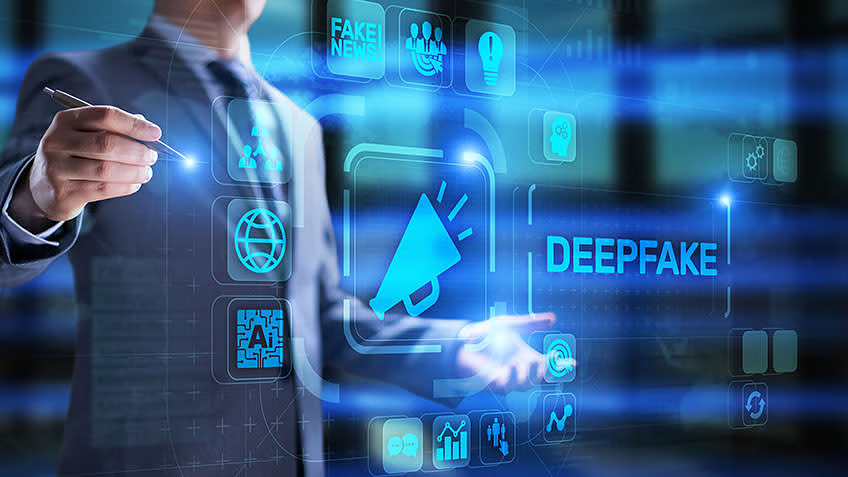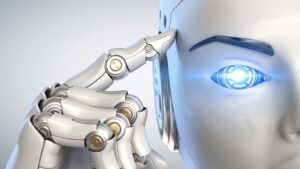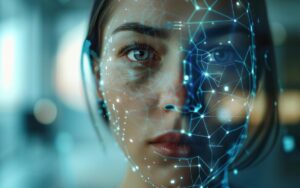In an era where technological innovation leaps forward at breakneck speed, few developments have sparked as much intrigue and concern as deepfake AI. These sophisticated digital creations blend artificial intelligence and machine learning to craft videos and audio recordings that are startlingly realistic.
While deepfakes have positive applications in entertainment and education, their potential for misuse in spreading misinformation and committing fraud poses significant ethical and legal challenges. The blog underscores the critical need for AI professionals to develop and implement sophisticated detection and defense mechanisms to combat the misuse of deepfakes. It explores various industry efforts and the development of tools designed to identify and mitigate the risks associated with deepfake technology. It also shares an online AI and machine learning bootcamp professionals can take to gain the skills required to ensure the ethical use of this technology.
Let’s get started!
What are Deepfakes?
The term “deepfake” is a fusion of “deep learning” and “fake,” referring to artificial intelligence systems that generate convincingly realistic yet entirely synthetic audio and video clips. Deep learning algorithms, a subset of AI, mimic human brain functions to analyze patterns in data, learning how to replicate behaviors, speech, and likenesses with high accuracy. This technology can create or alter content in a way that is often indistinguishable from authentic media.
Also Read: Machine Learning in Healthcare: Applications, Use Cases, and Careers
How Is Deepfake Created, and How Are They Being Used?
Creating a deepfake involves training a computer model on a data set of images and sounds to understand how a target person looks and speaks from multiple angles. The more comprehensive the dataset, the more convincing the deepfake. This process typically uses a method known as Generative Adversarial Networks (GANs), where two models work against each other: one generates the fake, and the other attempts to detect its fakeness, continuously improving until the fake passes as real.
Deepfakes have found a variety of applications. In the entertainment industry, they are used to de-age actors, resurrect deceased celebrities in films, or enhance the dubbing of foreign media by altering a speaker’s mouth movements to match the target language seamlessly. In journalism, deepfake technology can recreate realistic scenarios or speeches for educational or training purposes. However, its darker uses include creating false narratives in political propaganda, fraudulent activities, and even non-consensual synthetic pornography, raising significant legal and ethical issues.
Methods of Detecting and Defending Against Deepfakes
As deepfake technology evolves, so do the methods to detect and combat them. Early detection methods focused on visual cues: unnatural blink rates, odd lip movements, or inconsistent lighting. However, as deepfakes become more sophisticated, these physical discrepancies are diminishing.
Today, detection techniques involve more advanced AI systems trained to pick out anomalies imperceptible to the human eye. These include inconsistencies in pixel patterns, color hues, or audio discrepancies. Additionally, blockchain technology can be used to verify the authenticity of digital media, providing a tamper-proof record of the original content that can help distinguish real from counterfeit media.
Also Read: What is Machine Learning? A Comprehensive Guide for Beginners
Examples of Deepfakes and Misinformation
One of the most notable examples of deepfakes was a video of former U.S. President Barack Obama, created by researchers at the University of Washington in 2017, showing him voicing words he never actually spoke. More recently, a deepfake of Ukrainian President Volodymyr Zelensky circulated, wherein he purportedly asked Ukrainian troops to surrender to Russian forces, a dangerous use of the technology in a geopolitical crisis.
What Industries Are Doing to Detect Deepfakes
Various industries are rallying to address the challenges posed by deepfakes. The media and entertainment sectors are at the forefront, developing technologies to ensure the authenticity of their content. Some social media platforms are also investing in technology to flag and remove deepfake content that violates their terms of service, especially if it’s intended to mislead or harm users. Yet, there’s still way more work to do on that front.
Financial institutions are equally concerned, as deepfakes could facilitate identity theft and fraud. These organizations are enhancing their verification processes to incorporate biometric data that can distinguish real human traits from AI-generated fakes.
Common Tools to Detect Deepfakes
Several tools and initiatives are available to help detect deepfakes. Microsoft’s Video Authenticator can analyze a video file and provide a score indicating the likelihood of the media being altered. Startups like Deeptrace and Sensity offer detection services that scan the internet for deepfake videos alerting clients about potential fakes involving their brands or personas.
Also Read: Machine Learning Interview Questions & Answers
Wrapping Up
As deepfake technology continues to develop, it presents a paradox of potential benefits and significant risks. The ability to create hyper-realistic media has exciting applications in many fields but also poses a formidable threat regarding misinformation and fraud. Moving forward, it will be crucial for technology developers, lawmakers, and the general public to collaborate on establishing norms and regulations that harness the benefits of deepfake AI while safeguarding against its dangers. This balanced approach will ensure that this powerful technology enhances our digital experiences rather than undermine them.
Are You Interested in a Career in AI and Machine Learning?
It’s no secret that AI is revolutionizing how we live and work today, and it happened way faster than many expected. While many are worried about AI replacing human jobs (which is true for some roles), there is an unprecedented need for AI and machine learning professionals to manage its inevitable, practical, safe, and ethical adoption. On top of that, people in all organizational roles will need to understand this technology.
You can get ahead of the curve by taking a comprehensive AI and machine learning program that will train you with the latest concepts, skills, and tools to be a part of the future. Check it out!
You might also like to read:
How to Become an AI Architect: A Beginner’s Guide
How to Become a Robotics Engineer? A Comprehensive Guide
Machine Learning Engineer Job Description – A Beginner’s Guide






